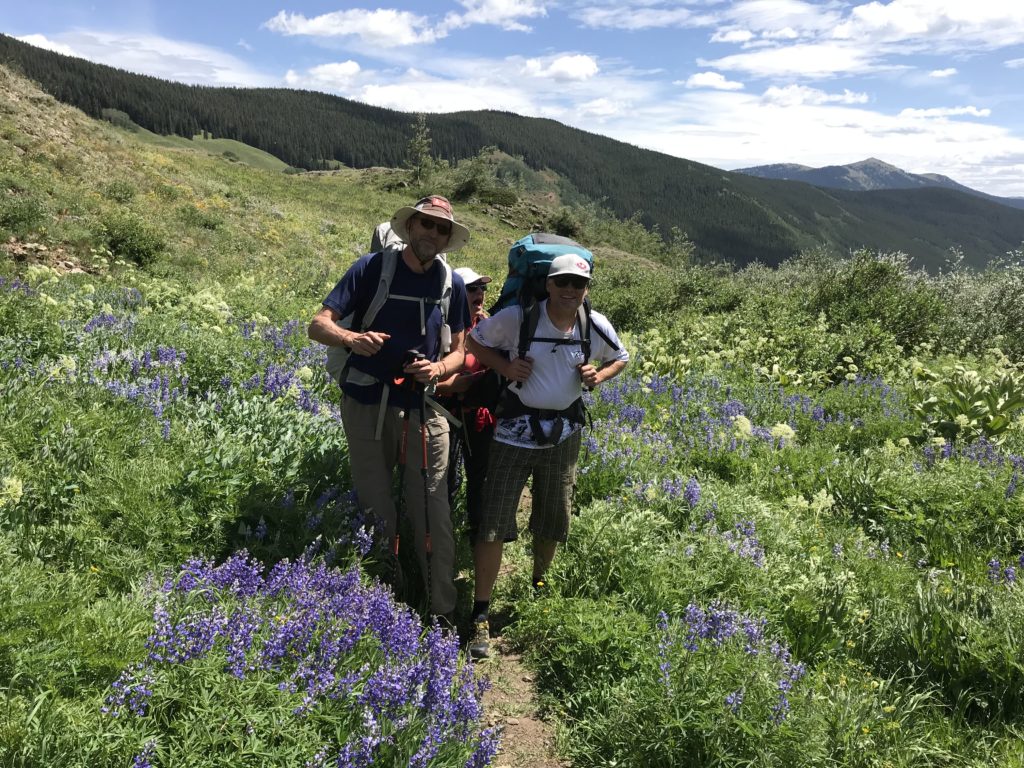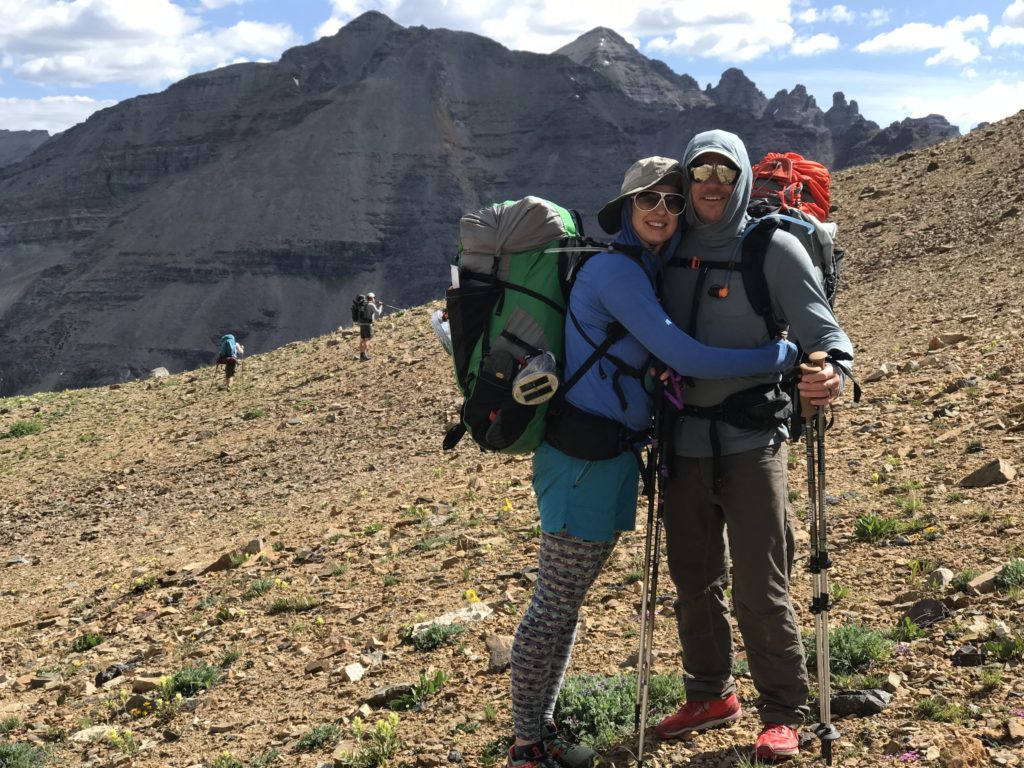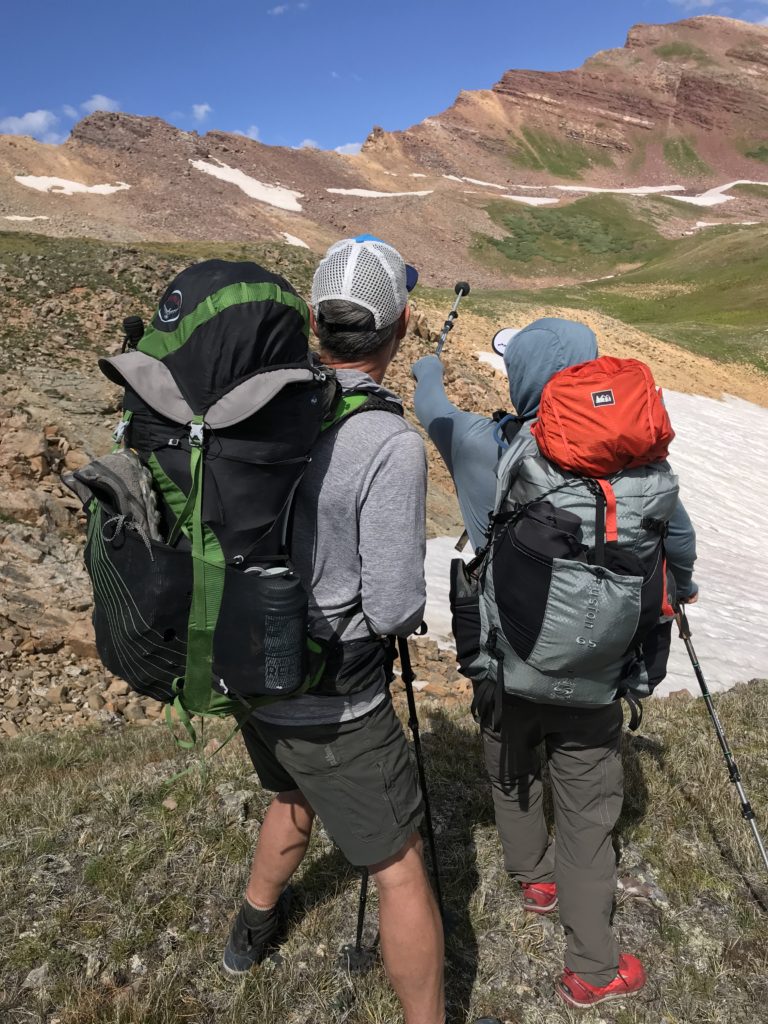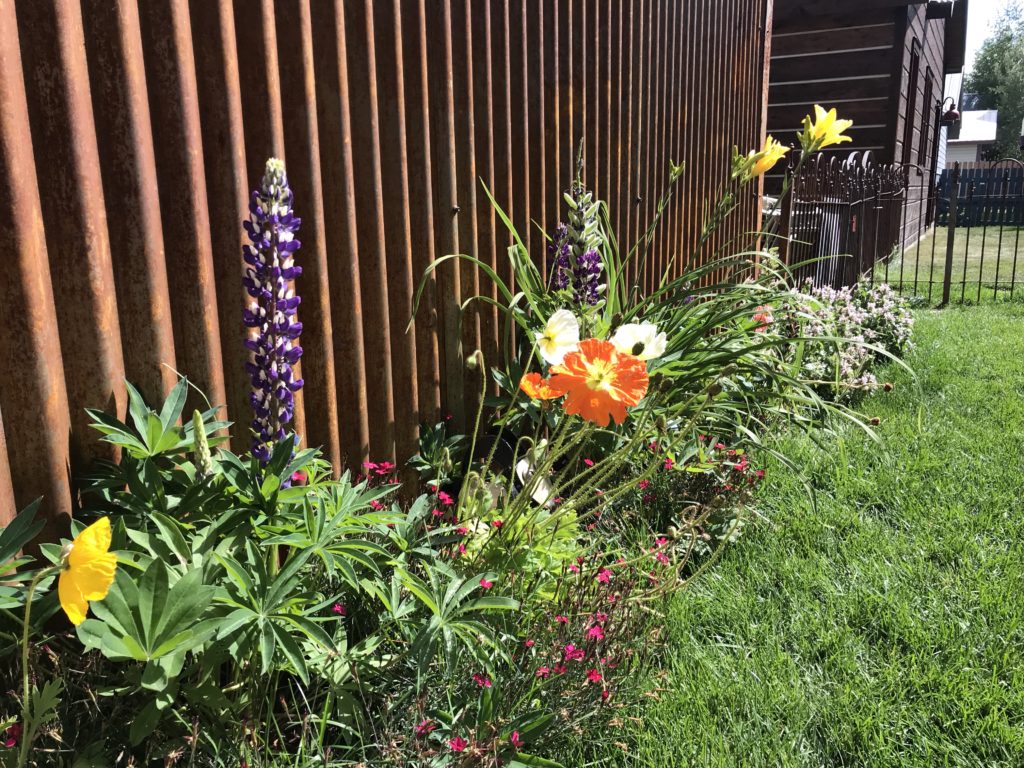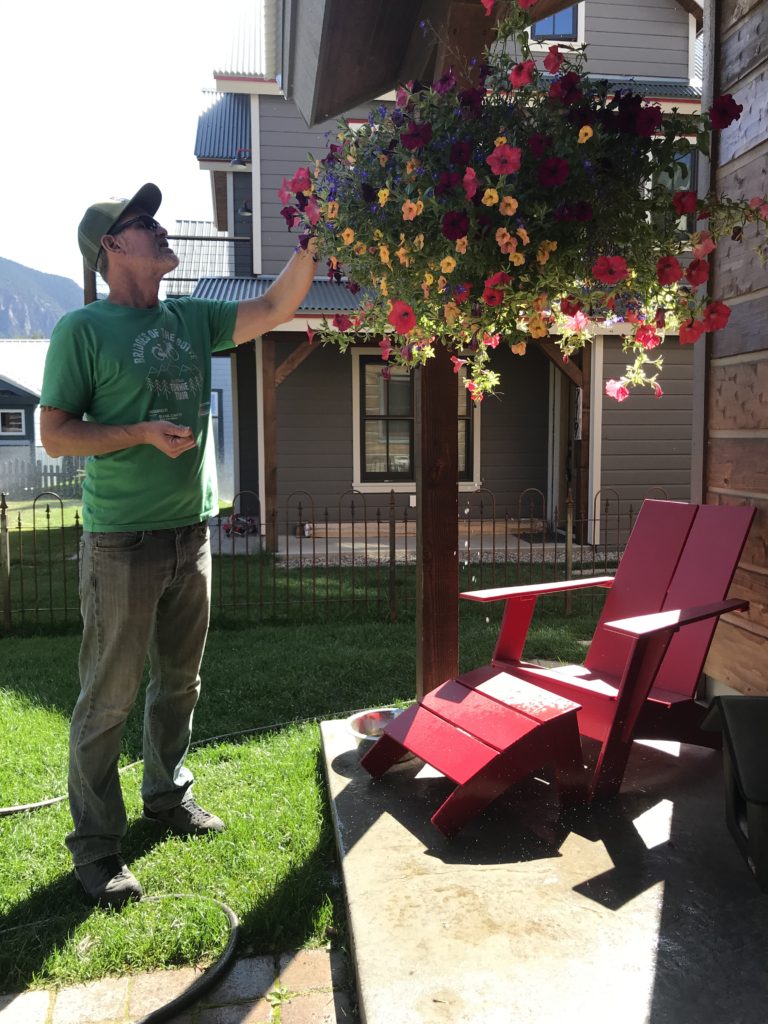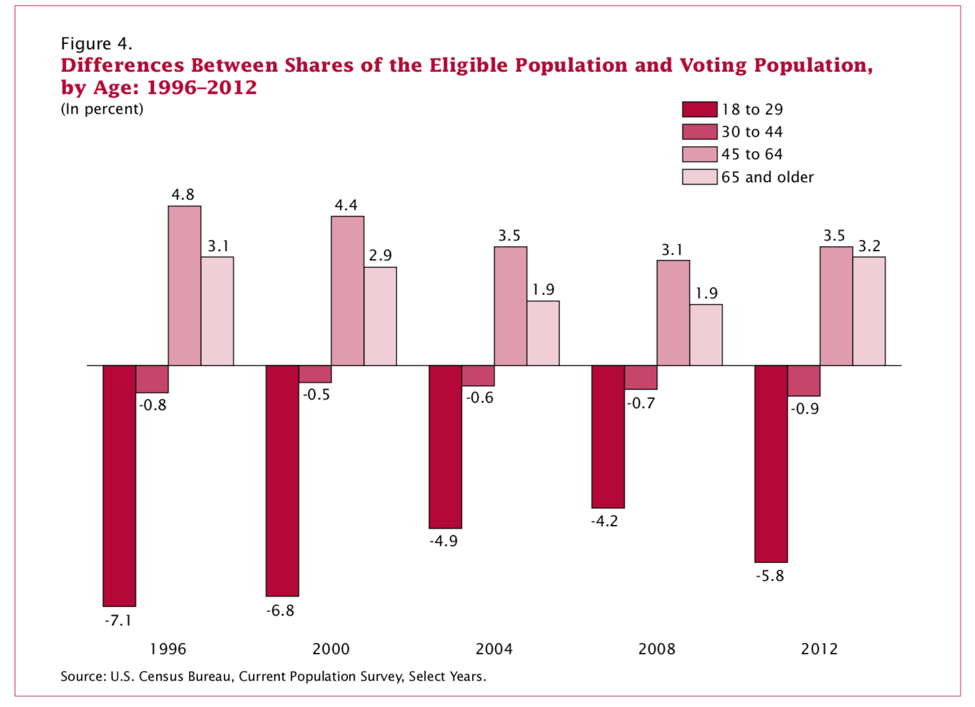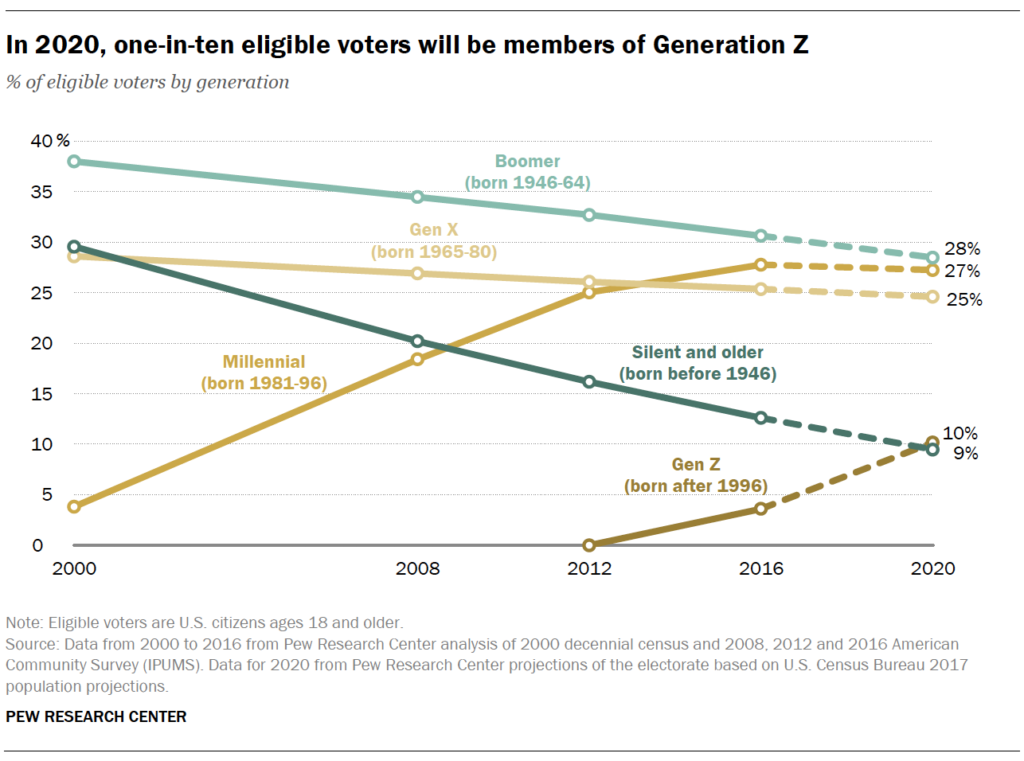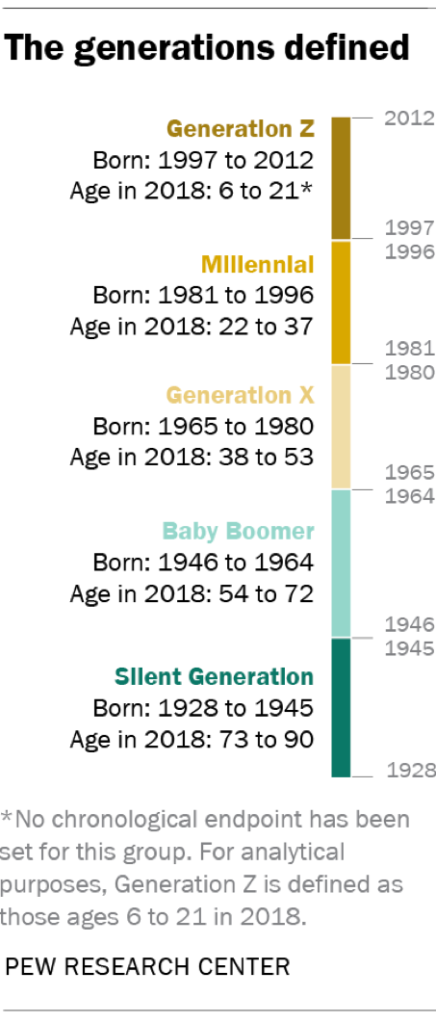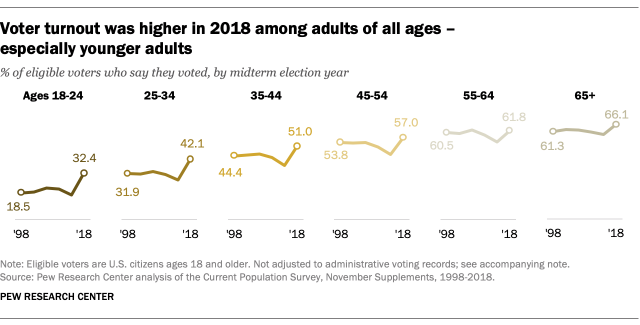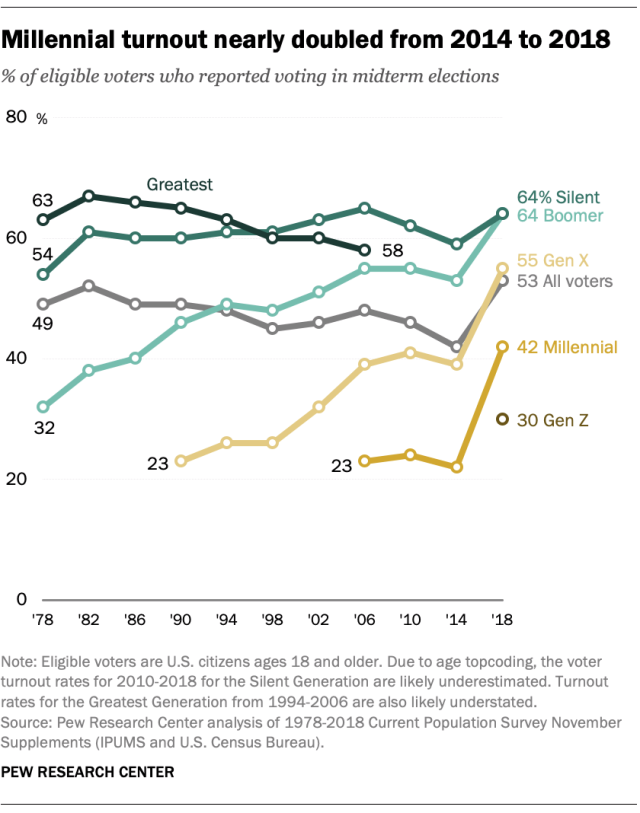You never know what you’re going to get when you go into the high Rockies. After a seven hour bushwhack through the most beautifully flowered mountains I’ve ever seen, we made it to Conundrum Hot Springs. I love hot springs and the bubbling hot spring felt amazing on my tired bones and body. After dinner, we were ready to get into the spring until the stars came out when a bull moose walked right into one of the three hot spring pools.
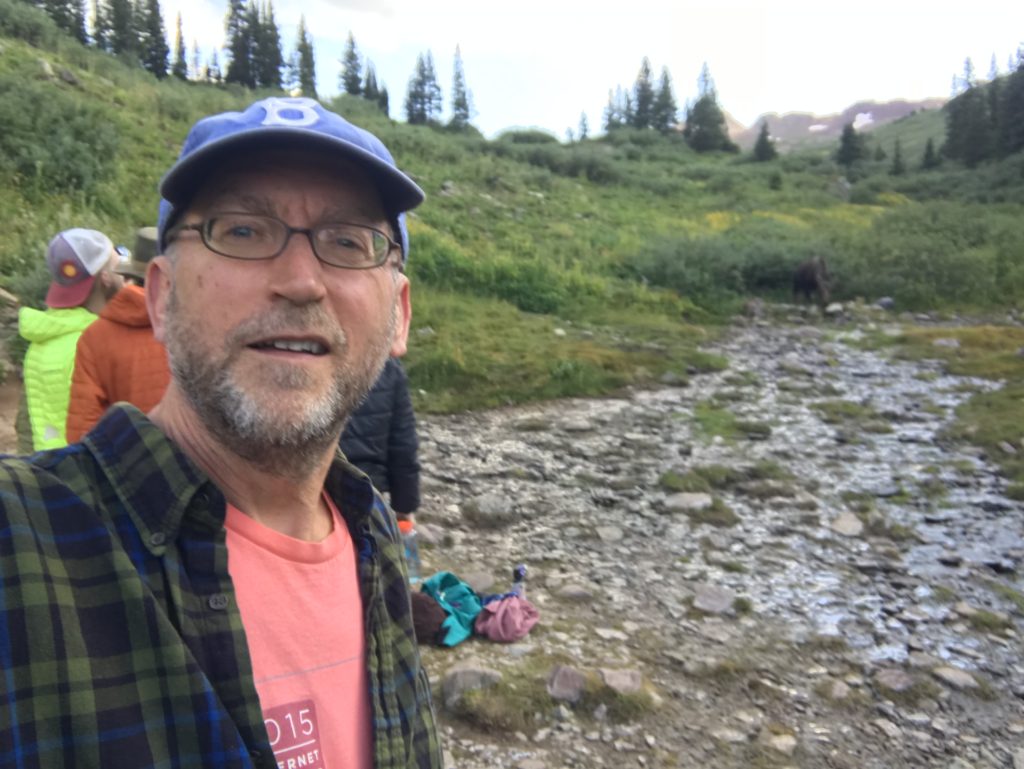
Everyone in camp stopped to watch the moose. His legs were amazingly long and he waded into and drank from the hot spring pool. The upper pool was about 50 yards from the hottest, main pool where we were. We gawked at the huge beast and calmly took pictures from afar. After soaking his ankles for a good ten minutes, the bull walked right into a seemingly impenetrable patch of willows. The tall moose had no problem plowing through the dense vegetation and eating any willows that got in his way.
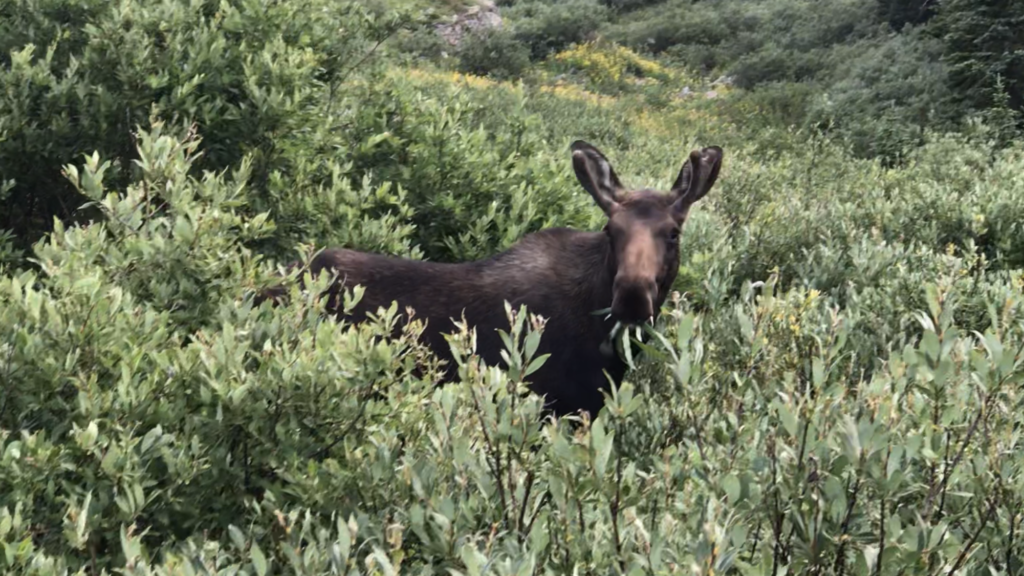
We made dinner in a clump of trees near the hot spring because our camp was almost a mile downstream. The moose continued eating in the willows and worked his way right into our picnic area where I took this picture.
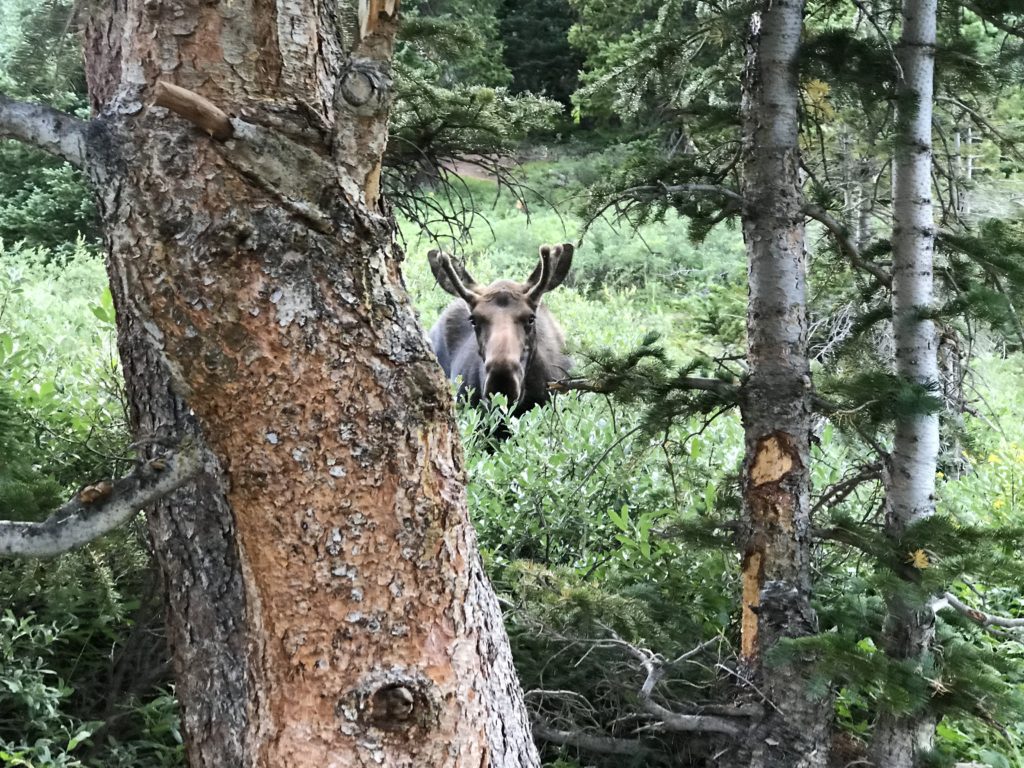
He eventually came out of the willows while happily chowing some leaves. Then he walked toward the main hot spring and out into the open. My friend Frank in the red jacket was initially behind me, but then the moose walked around us so that Frank was in between me and the moose. I took some video while Frank chewed gum and stared him down. The moose just kept meandering and got many warm drinks from the hot creek that flowed out of the pools.
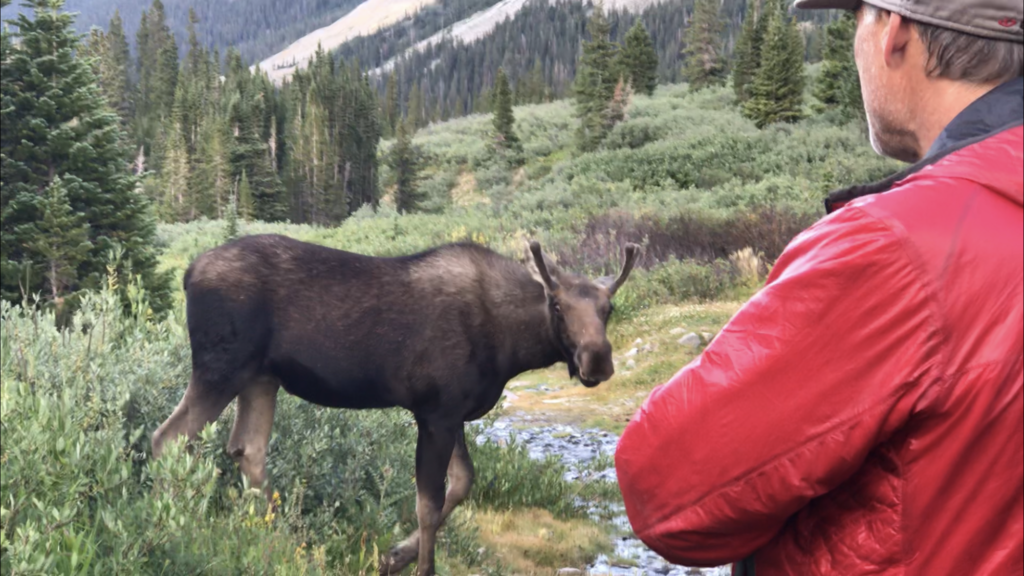
The moose had our full attention, but I felt relaxed enough to sit down and continue taking video. After 30 minutes, I started to get a little bored watching him nibble on grass and lick the mineral-encrusted rocks near the hot pools. I started doing time-lapse videos to speed his ramblings up. The problem was that he was starting to eat into our soaking time. We wanted to get in the tub, but we didn’t want to startle the moose either.
Dean was the first to break down and sneak into the main pool. Dean got into the hot pool and was looking right up at the bull. Dean was soaking a good ten minutes before Frank and Dean’s wife Amy joined him in the pool. They got in a good soak before the moose finally wandered back up the trail and right in front of the three soakers. I made this two-minute video of the whole experience.
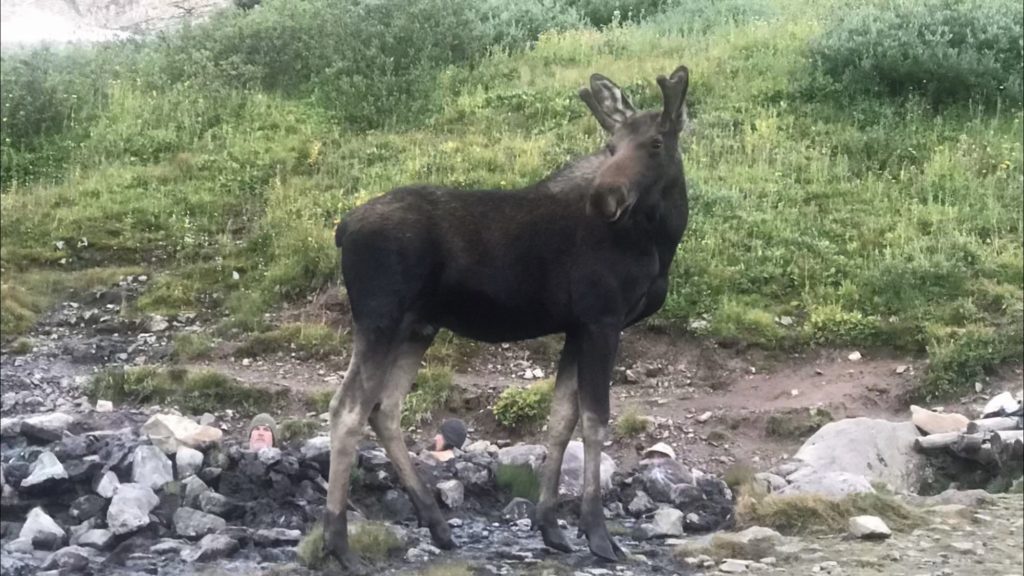
The moose came back the next morning and got another soak. He seems to like the soothing waters as much as I did!
Sign up for my newsletter here:
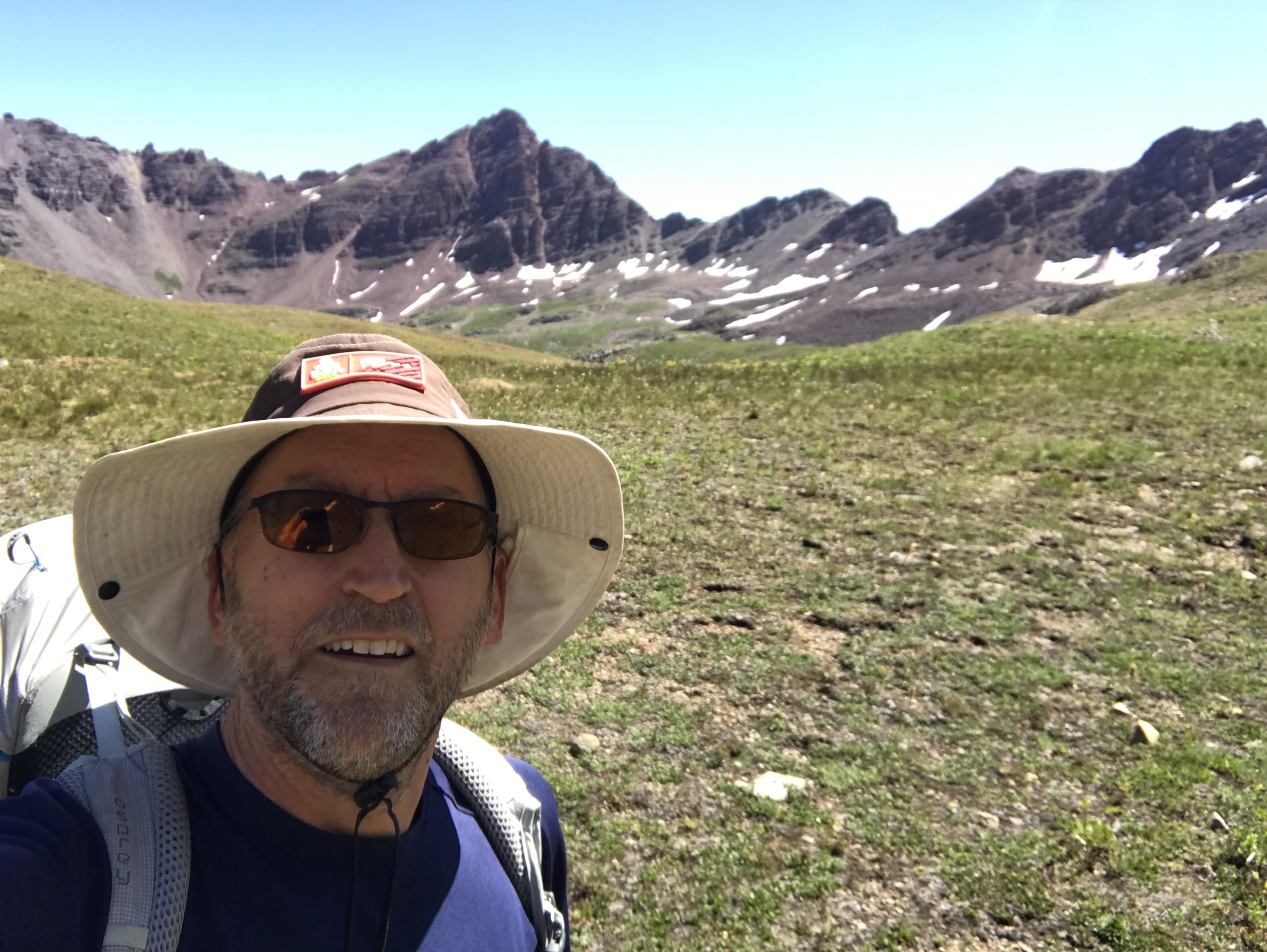 Logistics – if you want to know more.
Logistics – if you want to know more.
This trip started for me when I reached out to my ultimate buddy Frank. Frank and I played on the Cal Poly Ultimate team and we reconnected when I ran the Cal Poly Alumni Association in Denver. I told Frank how I had a couple of weekends in August open for a backpacking trip. We tried to recruit some old ultimate buddies, but that failed. Then he reached out to his canyoneering friend Dean and he said we could join his party of four on this backpacking trip to Conundrum Hot Springs.
We didn’t have a permit at the very popular hot spring at first, but Frank ran across one in his office and Dean persisted and got one on the website. So we had, and needed, two campsites for the six of us because the sites turned out to be pretty small.
We met on a Friday at Dean and Amy’s house in Crested Butte. They had beds and bikes for each of us and we hit it off well. CB is a lovely ski/mountain biking town that I immediately fell in love with. Check out all the bikes in CB!
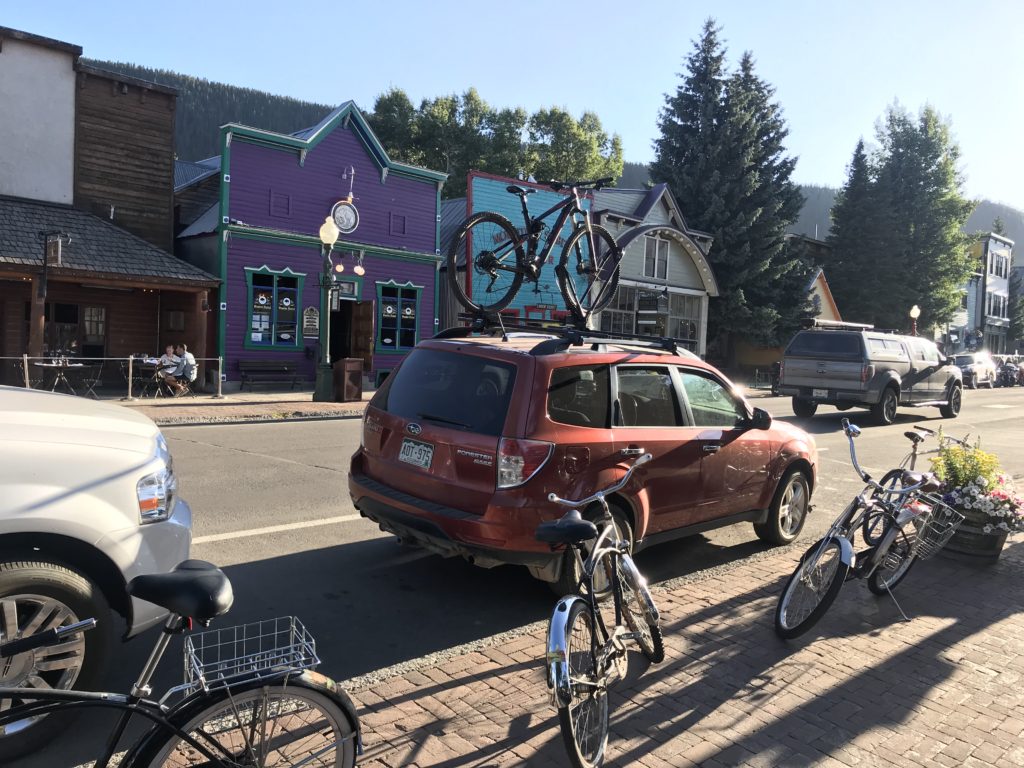
We had a lovely dinner in downtown Crested Butte, got a good sleep and packed up the next morning. We had a long, late breakfast and then we shuttled Dean’s truck to Gothic where we would hike out. All six of us got in Amy’s truck and we drove to the Teocalli mountain bike trailhead. The road was a wreck of a 4WD road, but we made it to the trailhead around 1pm.

I like to hike in the afternoon and evening, so I was glad for the late start. We had trail for the first mile, but it faded to what Dean called a social trail. Most of the time it was a bushwhack up and through the flowery fields. It was usually easy going, but we’d run into a ravine like this several times.
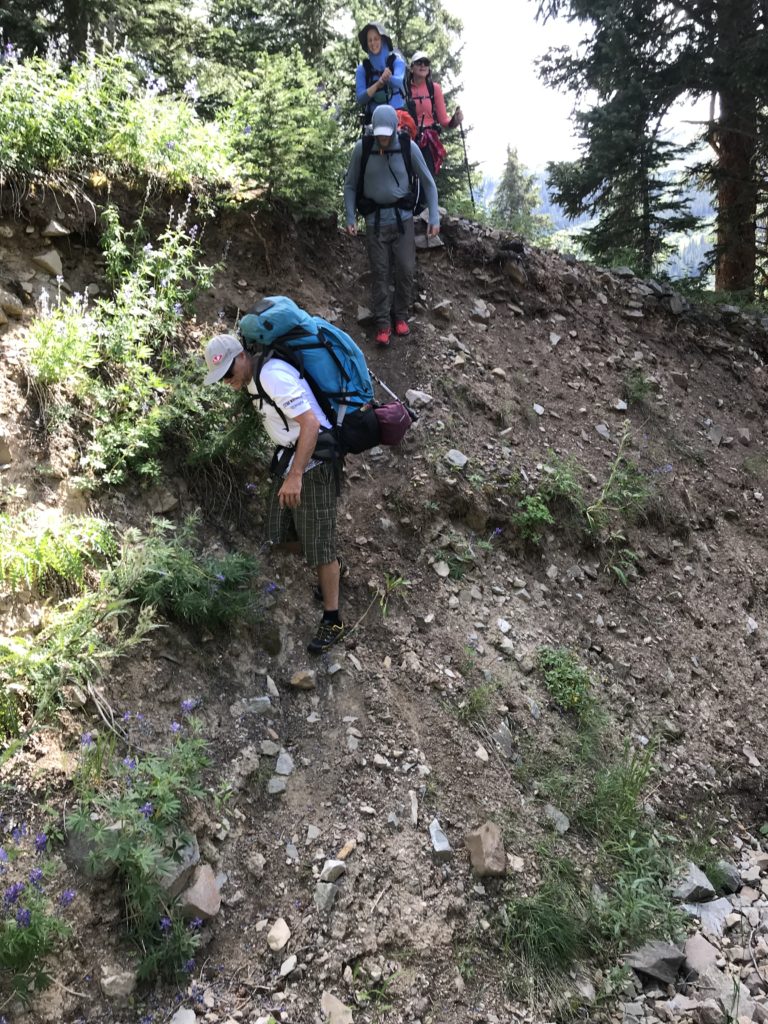
Without a trail, I had to watch each step and it took five hours to go four miles and up 1,400′ to get to a high camp above treeline at about 11,600′. We stayed up until the stars came out and the Milky Way swirled in the dark sky. The next morning we left camp about 9am and had to hike another 1,100′ up to Coffeepot Pass. The story is that some miner left his coffee pot up there and people are still searching for it.
Coffeepot Pass was pretty easy until we ran into some snow on the north side of the pass. Dean led us through a pretty loose talus field and across a little snowfield to get down the other side. The snow would have been a problem if we had gone even a few weeks earlier. The pass was probably snowed in for most of July. We went cross country without trail for another half a mile before catching the trail from Triangle Pass. From there, it was smooth hiking on the trail for another hour to the hot springs. Altogether, it took about seven hours of bushwhacking and an hour on the trail to get to Conundrum from the south. People usually hike to Conundrum via an 8-mile hike from the Aspen side of the mountain.
We were soon soaking in the hot spring and I slept well after the tough hikes on the first two days.
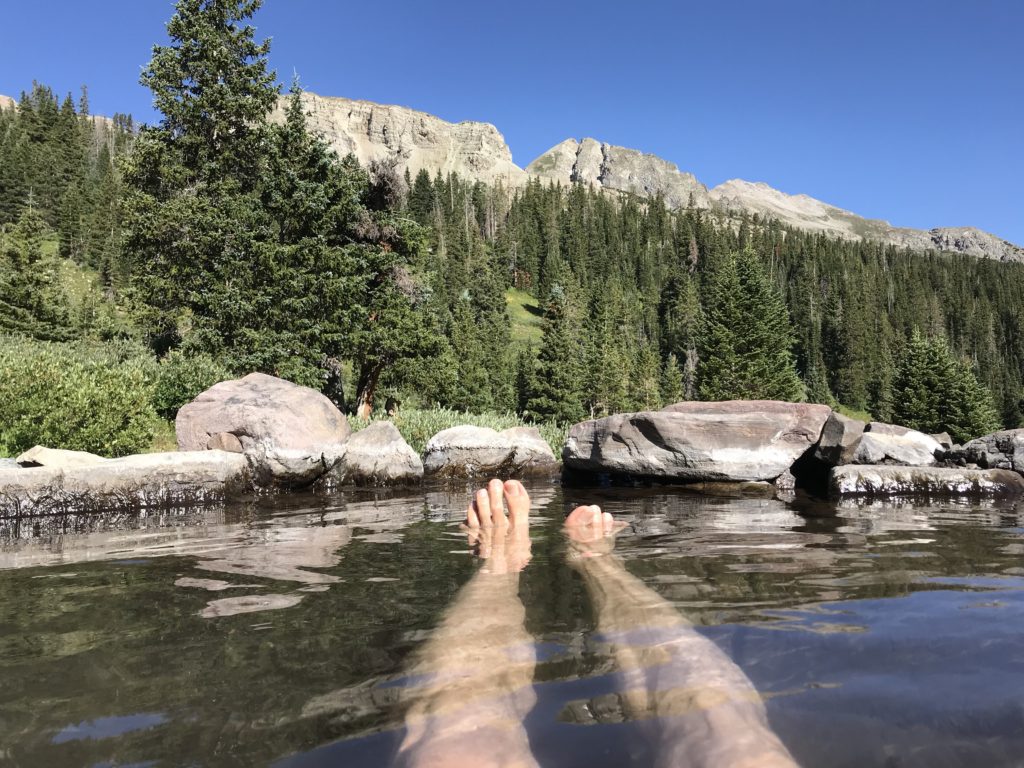
To get back to Crested Butte, we hiked over Triangle Pass that peaks out at 13,000′. We had to climb about 1,750′ with lighter packs after eating most of our food. Frank and I started at 10am while Dean, Amy Cameron and Rick started at 11. Frank and I took a casual walk and relaxed in the flower-filled meadows while waiting for them to catch up. It was another gorgeous day.
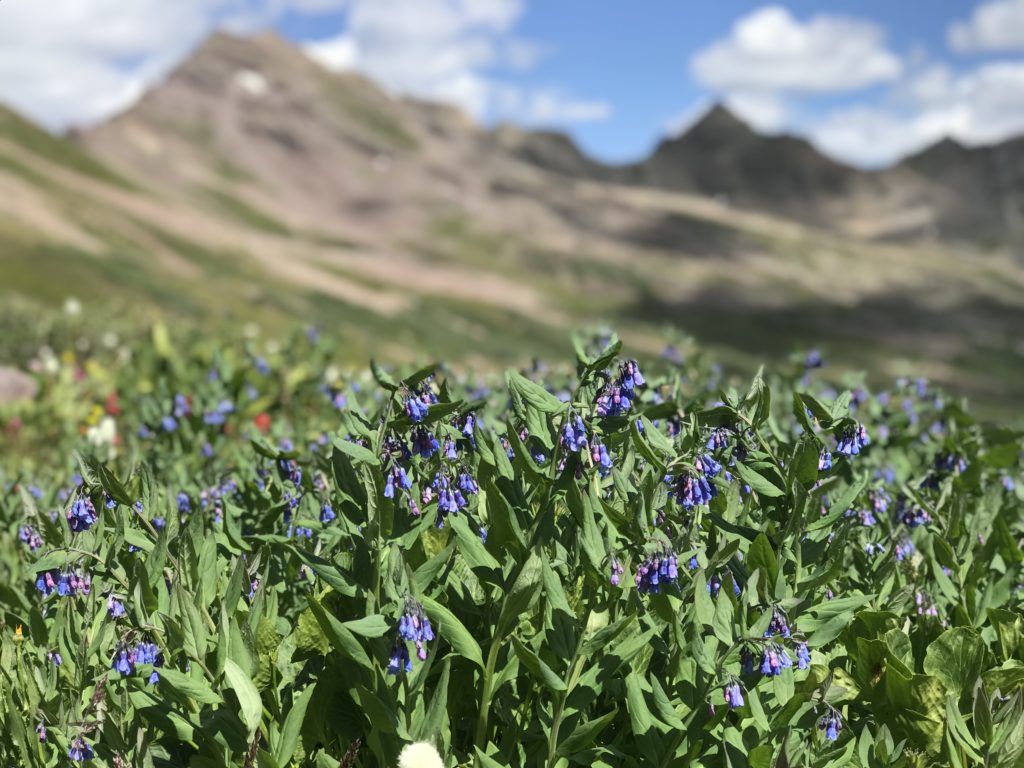
Once they caught up, I had to pick up my pace. The winds picked up and we were rather exposed high above tree line on the thin, little goat trail that is rated a double black diamond because of the steep mountainsides that we hiked on. Everyone was strong hikers and we worked our way through some massive rubble fields and down a long hill. We got to the trailhead near Gothic after a seven hour hike that was mostly downhill. We got in the truck and went back to CB for pizza, beer and margaritas. Food and drink never tastes so good as after a great backpack!
After another night in CB and a good breakfast, Frank and I headed back to Salida. Dean had orchestrated a superbly executed trip with no drama and maximum fun! Dean and Amy liked it so much that they are doing it again this weekend!
Here are some other pics from the hike. The flowers were in full bloom in late August. Spring was still in the air up there, but it will soon start snowing. It’s a tough, but amazing life they live up there above tree-line.
